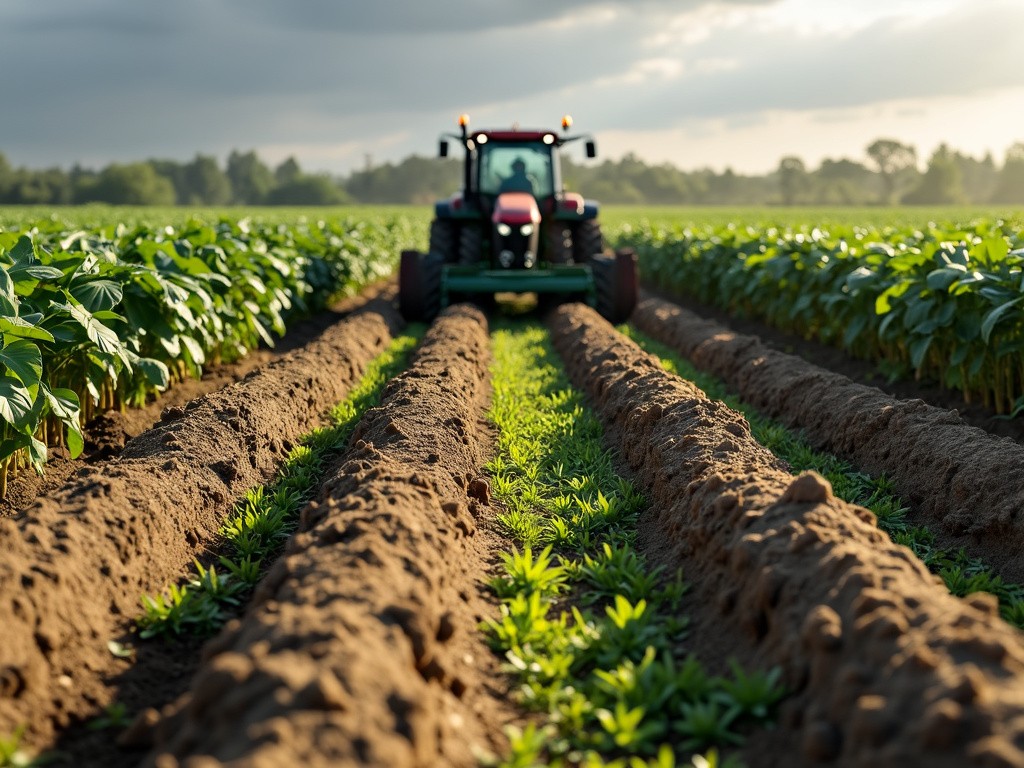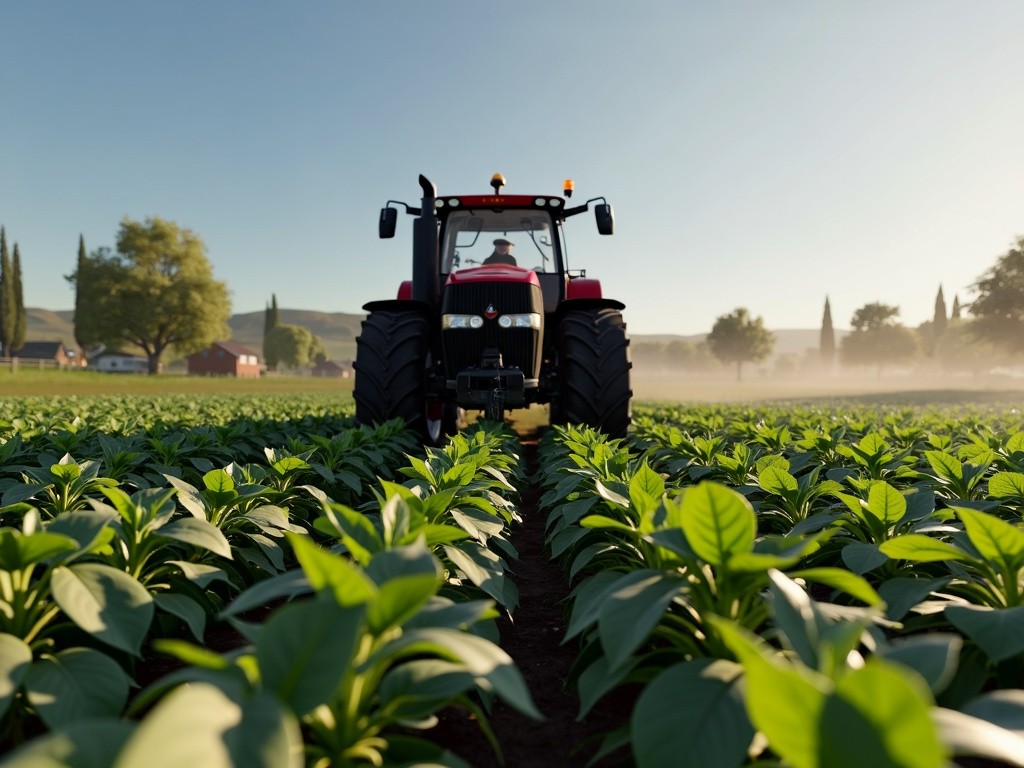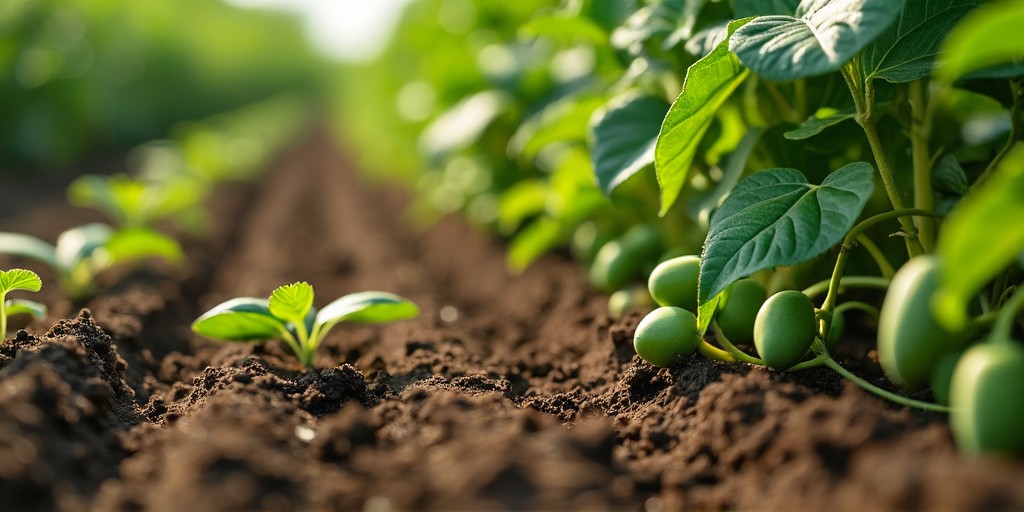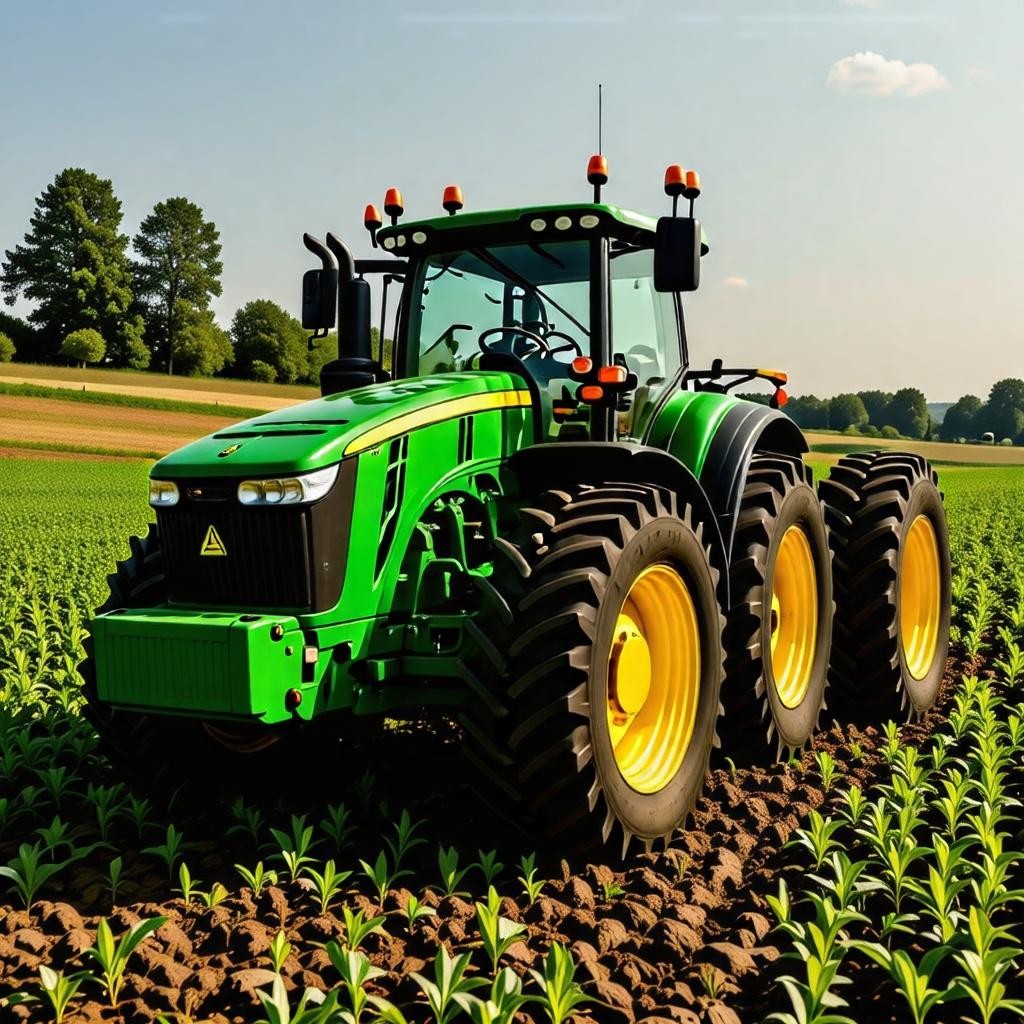Welcome to the comprehensive guide on mastering bean cultivation in Farming Simulator 25! Whether you’re a seasoned virtual farmer or a newcomer to the series, this guide is designed to help you understand and excel in the art of bean farming within the game.
Farming Simulator 25 offers an immersive and realistic agricultural experience, allowing players to manage their own farms, cultivate various crops, and engage in a wide range of farming activities. Among the diverse crops available in the game, beans stand out as a valuable and rewarding choice for several reasons. They not only enrich the soil but also provide a steady income stream, making them a strategic addition to any virtual farm.
The objective of this guide is to equip you with the knowledge and skills needed to successfully cultivate beans in Farming Simulator 25. We’ll cover everything from understanding the different types of beans and their growth cycles to preparing your farm, planting, caring for your crop, and ultimately harvesting and maximizing your profits.
By following the strategies and tips outlined in this guide, you’ll be well on your way to becoming a proficient bean farmer in the game. So, let’s dive in and start our journey towards mastering bean cultivation in Farming Simulator 25!

Beans in Farming Simulator 25
Beans are a versatile and valuable crop in Farming Simulator 25, offering a unique set of advantages and challenges for players. Understanding the growth cycle, seasonal considerations, and economic benefits of growing beans is essential for maximizing your farming strategy.
Growth Cycle and Seasonal Considerations
Beans in Farming Simulator 25 go through several distinct growth stages, each requiring specific care and attention. The growth cycle typically consists of four main stages:
- Growth State 1: This is the initial stage where the bean seeds germinate and small plants begin to emerge.
- Growth State 2: The plants start to develop further, with visible leaves and stems.
- Growth State 3: The bean plants become more robust, with more pronounced leaves and the start of pod development.
- Growth State 4: The final stage where the beans are fully mature and ready for harvest.
Seasonal considerations are crucial for successful bean cultivation. Beans typically thrive during the warmer months, and the game reflects this by allowing planting in specific months. It’s essential to plan your planting and harvesting schedule accordingly to ensure optimal growth and yield.

Economic Benefits of Growing Beans
Growing beans offers several economic benefits that can significantly boost your farm’s profitability. Here are some key points to consider:
- Maximum Yield: Beans can provide a high yield per hectare, making them a lucrative crop.
- Average Selling Price: The market value of beans is generally favorable, ensuring a good return on investment.
- Growth Duration: The growth duration for beans is relatively manageable, allowing for multiple harvests in a single season.
- Soil Enrichment: Beans are known for their ability to enrich the soil, making them an excellent choice for crop rotation strategies.
- Low Seed Requirement: The number of seeds required per hectare is reasonable, keeping initial costs manageable.
By understanding and leveraging these economic benefits, you can strategically integrate bean cultivation into your farming operations to enhance your overall profitability and sustainability.
In the next sections, we’ll delve into the specifics of preparing your farm, planting, caring for, and harvesting your bean crop to help you achieve the best possible outcomes.
Preparing Your Farm for Beans
Before diving into the planting process, it’s crucial to ensure that your farm is well-prepared for bean cultivation. This involves selecting the right field, properly preparing the soil, and having the necessary equipment and tools at your disposal.
Selecting the Right Field
Choosing the appropriate field for your bean crop is the first step in ensuring a successful harvest. Here are some factors to consider:
- Field Size: Beans can be grown in fields of various sizes, but larger fields will naturally yield more crops. Ensure that the field is large enough to accommodate your farming equipment.
- Soil Quality: Beans thrive in well-drained, fertile soil. Avoid fields with poor drainage or known soil issues.
- Proximity to Resources: Select a field that is close to your farm buildings and resources, such as water sources and storage facilities, to streamline your farming operations.
Soil Preparation Techniques
Proper soil preparation is essential for the healthy growth of your bean crop. Follow these techniques to ensure your soil is in optimal condition:
- Plowing: Use a plow to turn the soil and bury any remaining crop residue from previous harvests. This helps to aerate the soil and improve its structure.
- Cultivating: After plowing, use a cultivator to break up any large clumps of soil and create a fine seedbed. This step is crucial for ensuring even seed distribution and promoting healthy root development.
- Fertilizing: Apply a balanced fertilizer to enrich the soil with essential nutrients. Beans benefit from a good supply of nitrogen, phosphorus, and potassium.

Necessary Equipment and Tools
Having the right equipment and tools is vital for efficient and effective bean cultivation. Here are some key items you’ll need:
- Tractor: A reliable tractor is essential for various tasks, including plowing, cultivating, and harvesting.
- Plow and Cultivator: As mentioned, these tools are crucial for soil preparation.
- Seeder: A precision seeder is ideal for planting beans, as it ensures even seed distribution and proper depth.
- Sprayer: A sprayer is necessary for applying herbicides, pesticides, and fertilizers throughout the growing season.
- Harvester: A combine harvester with the appropriate header is essential for efficiently harvesting your bean crop.
Additionally, consider exploring mods available for Farming Simulator 25. Mods can enhance your farming experience by providing advanced equipment, improved tools, and additional features that can make bean cultivation more efficient and enjoyable.
By carefully selecting the right field, properly preparing the soil, and equipping yourself with the necessary tools, you’ll set a strong foundation for successful bean cultivation in Farming Simulator 25. In the next section, we’ll dive into the specifics of planting your bean crop.
Planting Beans
Once your farm is prepared, it’s time to focus on planting your bean crop. This section will guide you through the optimal planting times, seed selection, procurement, and a step-by-step planting process to ensure a successful harvest.
Optimal Planting Times
Timing is crucial when it comes to planting beans in Farming Simulator 25. Beans are typically planted during the warmer months, so it’s essential to monitor the in-game calendar and weather conditions. The optimal planting window usually falls between late spring and early summer, as this period provides the ideal temperature and daylight conditions for bean growth.
Seed Selection and Procurement
Selecting the right seeds is vital for a successful bean harvest. Here are some tips for seed selection and procurement:
- Seed Quality: Opt for high-quality seeds to ensure better germination rates and healthier plants.
- Seed Variety: Consider the variety of beans you want to grow. Different varieties may have slightly different growth cycles and yields.
- Procurement: Purchase your seeds from the in-game shop or consider using mods that offer enhanced seed varieties with improved attributes.

Step-by-Step Planting Process
Follow these steps to plant your bean crop efficiently:
- Prepare Your Equipment: Ensure your tractor and seeder are in good working condition. Attach the seeder to your tractor and fill it with the selected bean seeds.
- Load the Seeds: Purchase the required amount of seeds from the shop or use seeds obtained from mods. Load the seeds into the seeder.
- Navigate to the Field: Drive your tractor to the prepared field. Ensure the field is well-tilled and free of weeds.
- Start Planting: Begin planting by activating the seeder and driving along the rows of the field. Maintain a steady speed and ensure even seed distribution.
- Monitor Progress: Keep an eye on the seeder’s progress and refill it with seeds as needed. Use the in-game map to track your planting progress and ensure full coverage of the field.
Using mods can enhance your planting experience by providing advanced seeders, improved seed varieties, and additional features that can make the process more efficient and enjoyable.
By adhering to the optimal planting times, selecting high-quality seeds, and following the step-by-step planting process, you’ll set the stage for a successful bean harvest in Farming Simulator 25. In the next section, we’ll cover the essential aspects of caring for your bean crop.
Caring for Your Bean Crop
Once your beans are planted, the next crucial step is to care for your crop to ensure optimal growth and a bountiful harvest. This involves implementing effective irrigation strategies and adhering to fertilization schedules.
Irrigation Strategies
Proper irrigation is essential for the healthy growth of your bean crop. Here are some strategies to ensure your beans receive the right amount of water:
- Regular Watering: Beans require consistent moisture, especially during the early stages of growth. Use the in-game irrigation tools to water your fields regularly.
- Monitor Soil Moisture: Keep an eye on the soil moisture levels. The game provides indicators to help you determine when your crop needs watering.
- Avoid Overwatering: While adequate water is crucial, overwatering can lead to root rot and other issues. Ensure that the soil is well-drained to prevent waterlogging.
Consider using FS25 mods that offer advanced irrigation systems and tools. These mods can help you automate the watering process and provide more precise control over your irrigation strategies.
Fertilization Schedules
Fertilization plays a significant role in the growth and yield of your bean crop. Here’s a guide to creating an effective fertilization schedule:
- Initial Fertilization: Apply a balanced fertilizer during the soil preparation stage to enrich the soil with essential nutrients.
- Mid-Season Fertilization: As your bean plants grow, they will require additional nutrients. Apply a second round of fertilizer during the mid-season to support their growth.
- Targeted Nutrients: Beans benefit from specific nutrients, particularly nitrogen and phosphorus. Use fertilizers that provide these nutrients in the right proportions.

FS25 mods can also enhance your fertilization strategies by offering specialized fertilizers and advanced application tools. These mods can help you tailor your fertilization schedule to the specific needs of your bean crop.
By implementing effective irrigation strategies and adhering to a well-planned fertilization schedule, you’ll ensure that your bean crop receives the care it needs to thrive. In the next section, we’ll cover the important aspects of harvesting your bean crop.
Harvesting Beans
Harvesting is the culmination of your hard work in cultivating your bean crop. Timing the harvest correctly, using the right equipment, and properly handling the beans post-harvest are critical for maximizing your yield and profit.
Recognizing the Right Time to Harvest
Knowing when to harvest your beans is crucial for obtaining the best yield and quality. Here are some tips to help you recognize the right time:
- Growth State: Beans in Farming Simulator 25 reach their final growth state when the plants are fully mature and the pods are ready for harvest. Keep an eye on the growth stages to determine when your beans are ripe for harvesting.
- Visual Cues: Look for signs of maturity, such as dry pods and yellowing leaves. These visual cues indicate that the beans are ready to be harvested.
- Weather Conditions: Harvest your beans during dry weather to prevent moisture buildup, which can affect the quality of the harvested beans.

Harvesting Equipment and Techniques
Using the right equipment and techniques ensures efficient and effective harvesting. Here’s what you need to know:
- Combine Harvester: A combine harvester with a bean header is essential for harvesting beans. Ensure your harvester is well-maintained and ready for use.
- Harvesting Technique: Drive the combine harvester along the rows of the bean field, maintaining a steady speed. The harvester will cut the plants, separate the beans from the pods, and collect the harvested beans.
- Mods: Consider using FS25 mods that offer advanced harvesting equipment. These mods can provide more efficient and specialized tools for harvesting beans, making the process smoother and more productive.
Post-Harvest Handling and Storage
Proper post-harvest handling and storage are vital for maintaining the quality of your beans and maximizing your profits. Here are some key steps:
- Cleaning: After harvesting, ensure that the beans are cleaned to remove any debris or impurities. This step improves the quality of your harvest.
- Drying: If necessary, dry the beans to reduce moisture content. Proper drying helps prevent mold and ensures better storage conditions.
- Storage: Store your harvested beans in a dry, well-ventilated area to prevent spoilage. Consider using in-game storage facilities or silos to keep your beans in optimal condition.
- Transportation: Use transport vehicles like trailers to move your harvested beans to storage or directly to the market for sale.
Using mods can also enhance your post-harvest handling and storage options. Mods may provide advanced storage solutions, more efficient cleaning equipment, and improved transportation options.
By recognizing the right time to harvest, using the appropriate equipment and techniques, and properly handling your beans post-harvest, you’ll ensure a successful and profitable bean harvest in Farming Simulator 25. In the next section, we’ll dive into strategies for maximizing your profits.
Maximizing Profits
Maximizing profits is the ultimate goal of any farming operation in Farming Simulator 25. To achieve this, you need to carefully analyze the market, implement effective selling strategies, manage your costs, and employ techniques to increase your yield.
Market Analysis and Selling Strategies
Understanding the market dynamics is crucial for maximizing your profits. Here are some tips for market analysis and selling strategies:
- Monitor Prices: Keep a close eye on the in-game market prices for beans. Prices can fluctuate, so timing your sales strategically can significantly impact your earnings.
- Diversify Selling Points: Explore different selling points in the game, such as local markets, cooperatives, and direct sales to processors. Different buyers may offer varying prices, so diversifying can help you find the best deals.
- Contracts: Accept contracts from buyers if available. These contracts often guarantee a fixed price and quantity, providing a stable income stream.
- Storage: Consider storing your harvested beans if market prices are low. Waiting for prices to rise can lead to higher profits, but be mindful of storage costs and potential spoilage.
Cost Management and Budgeting
Efficient cost management and budgeting are essential for maintaining profitability. Here are some strategies to help you manage your expenses:
- Equipment Maintenance: Regularly maintain your farming equipment to reduce repair costs and extend their lifespan.
- Seed and Fertilizer Costs: Optimize your seed and fertilizer usage to minimize costs without compromising yield. Consider using mods that offer cost-effective alternatives.
- Labor Costs: In the game, labor costs can be managed by balancing AI workers and manual tasks. Using AI workers strategically can help reduce labor expenses.
- Investment in Technology: Invest in advanced equipment and technologies, such as precision farming tools, to improve efficiency and reduce long-term costs.

Tips for Increasing Yield
Increasing your yield is a key factor in maximizing profits. Here are some tips to help you achieve higher yields:
- Crop Rotation: Implement a crop rotation strategy to maintain soil health and prevent pest and disease buildup. Rotating crops can enhance overall yield and soil fertility.
- Precision Planting: Use precision seeders to ensure even seed distribution and optimal planting depth. This can lead to better germination rates and healthier plants.
- Optimized Fertilization: Apply fertilizers at the right time and in the right amounts. Use soil tests and in-game tools to determine the best fertilization schedule for your beans.
- Pest and Disease Management: Regularly monitor your crop for signs of pests and diseases. Use pesticides and fungicides as needed to prevent yield loss.
- Irrigation Control: Implement efficient irrigation strategies to ensure your beans receive the right amount of water. Avoid both overwatering and underwatering.
Conclusion
Mastering bean cultivation in Farming Simulator 25 is a rewarding journey that combines strategic planning, meticulous care, and a deep understanding of the game’s mechanics. Throughout this guide, we’ve covered essential aspects of bean farming, from preparation and planting to caring for your crop, harvesting, and maximizing profits.
We hope this guide has been informative and helpful in your quest to master bean cultivation. However, the learning process never ends, and we value your insights and experiences. Whether you’re a seasoned player or just starting out, we invite you to share your thoughts, tips, and stories with the community.
Your feedback is crucial in helping us improve and provide more valuable content. Please feel free to leave comments, share your own strategies, and discuss any challenges you’ve faced and how you overcame them. Your input can inspire other players and contribute to the collective knowledge of the Farming Simulator community.
Thank you for joining us on this journey through bean cultivation in Farming Simulator 25. Happy farming, and we look forward to hearing from you!
New to Farming Simulator 25 and this guide was a huge help. I was lost with beans but now I’m feeling confident. Loved the soil and irrigation tips. Also the mods suggestion was cool. Definitely checking those out. Thanks for helping newbies like me!